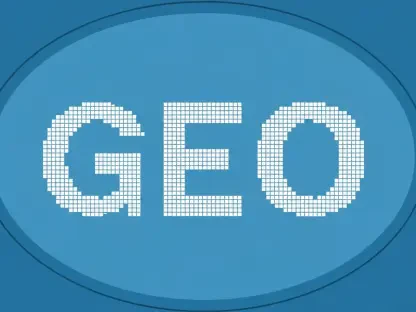I’m thrilled to sit down with Anastasia Braitsik, a globally recognized leader in SEO, content marketing, and data analytics. With her extensive expertise, Anastasia has helped countless businesses navigate the ever-changing landscape of digital marketing, particularly in the Charlotte, North Carolina area. Today, we’re diving into the cutting-edge strategies that set local SEO apart in 2025, exploring how AI, algorithms, and hyperlocal tactics are reshaping the game for Charlotte businesses. Our conversation touches on the evolution of search engine optimization, the impact of Google’s AI-driven updates, the importance of neighborhood-specific approaches, common pitfalls to avoid, and the delicate balance between design and performance.
How has SEO transformed over the past few years leading into 2025, and what makes it such a technical challenge now?
SEO has undergone a massive shift from a relatively straightforward process to a highly technical discipline. A few years ago, it was often about basic tactics like keyword stuffing or buying backlinks. But in 2025, it’s a complex battle involving machine learning, user behavior analysis, and Google’s frequent algorithm updates. The technical challenge comes from needing to understand not just search terms, but also searcher intent, device usage, and predictive patterns. For Charlotte businesses, this means staying ahead of changes that can impact traffic overnight, requiring constant adaptation and deep technical know-how.
What are some key differences between outdated tactics like keyword stuffing and the modern SEO strategies you implement?
The old-school approach of keyword stuffing was about cramming as many terms as possible into content, regardless of quality or relevance. It was a numbers game that often led to poor user experiences. Today, our strategies focus on context and intent. We craft content that answers real questions, aligns with how people search, and provides value. We use semantic keyword modeling and prioritize user engagement metrics like dwell time over sheer volume. It’s about building trust with both users and search engines, which is far more sustainable.
How does Google’s AI, such as RankBrain or BERT, influence the way you develop SEO strategies for your clients?
Google’s AI tools like RankBrain and BERT have revolutionized how we approach SEO by focusing on understanding searcher intent and context rather than just keywords. These systems analyze patterns in user behavior and refine results based on what people actually mean when they search. For our clients, this means we prioritize creating content that anticipates questions and solves problems, using structured data to help Google interpret pages accurately. It’s about aligning with how Google ‘thinks’ about a query, ensuring our strategies are future-proofed against AI-driven shifts.
Why is local SEO still so critical for Charlotte businesses in 2025, despite all the advancements in AI and technology?
Even with AI and global algorithms, local SEO remains vital because people still search for services and products near them, especially on mobile devices. Google prioritizes proximity and local relevance, so a business in Charlotte needs to show up for searches in specific areas like Plaza Midwood or Ballantyne. Local signals—things like neighborhood-specific content or geo-tagged images—help connect with the community in a way that resonates. In 2025, hyperlocal strategies ensure businesses aren’t just visible, but truly relevant to their immediate audience.
How do you help a business stand out in distinct Charlotte neighborhoods like South End or NoDa?
Standing out in neighborhoods like South End or NoDa requires a deep understanding of local culture and search behavior. We create content that mentions local landmarks, events, or even street names to build relevance. We also optimize Google Business Profiles settings to target specific service areas and use hyperlocal citations to reinforce location. For instance, a boutique in NoDa might benefit from content around local art scenes or festivals, which connects with the community and boosts visibility for neighborhood-specific searches.
What’s one common SEO mistake you see Charlotte businesses making in 2025, and how do you address it?
One frequent mistake is ignoring search intent—creating content or targeting keywords that don’t match what users are actually looking for. A Charlotte business might write blogs that sound great but miss the mark on solving customer problems, leading to high bounce rates. We tackle this by conducting thorough intent analysis, mapping content to the buyer journey, and ensuring every page serves a purpose. It’s about quality over quantity, making sure the content aligns with what both users and Google value.
How do you balance user experience with SEO requirements when they sometimes seem to conflict on a website?
Balancing UX and SEO is tricky but essential. A beautiful website might have design elements like heavy video carousels that slow down load times, hurting SEO through Core Web Vitals penalties. We focus on performance-first design—using clean code, lazy-loading images, and ensuring mobile-friendly navigation—while still maintaining visual appeal. Our goal is to create sites that load fast and guide users intuitively, satisfying both Google’s technical demands and the human need for a seamless experience.
What’s your forecast for the future of local SEO in Charlotte over the next few years?
I believe local SEO in Charlotte will become even more personalized and data-driven over the next few years. With AI continuing to refine how Google interprets searches, we’ll see an increased emphasis on hyperlocal signals and user-specific results. Businesses will need to leverage tools like real-time analytics and location-based content to stay relevant. I also expect voice search and mobile-first strategies to dominate, as more people use devices on the go to find nearby services. Staying agile and community-focused will be key to ranking well and connecting with customers.









